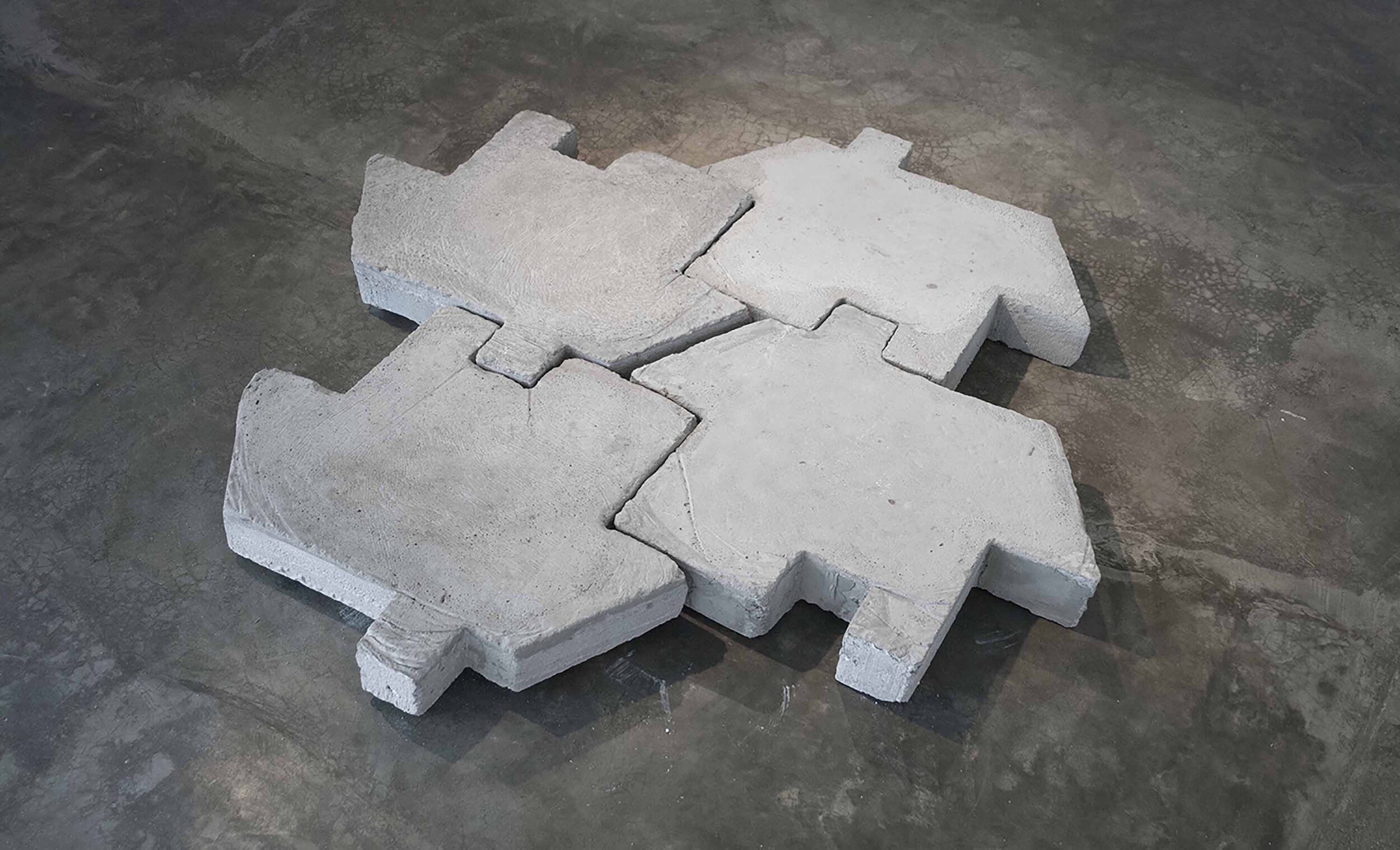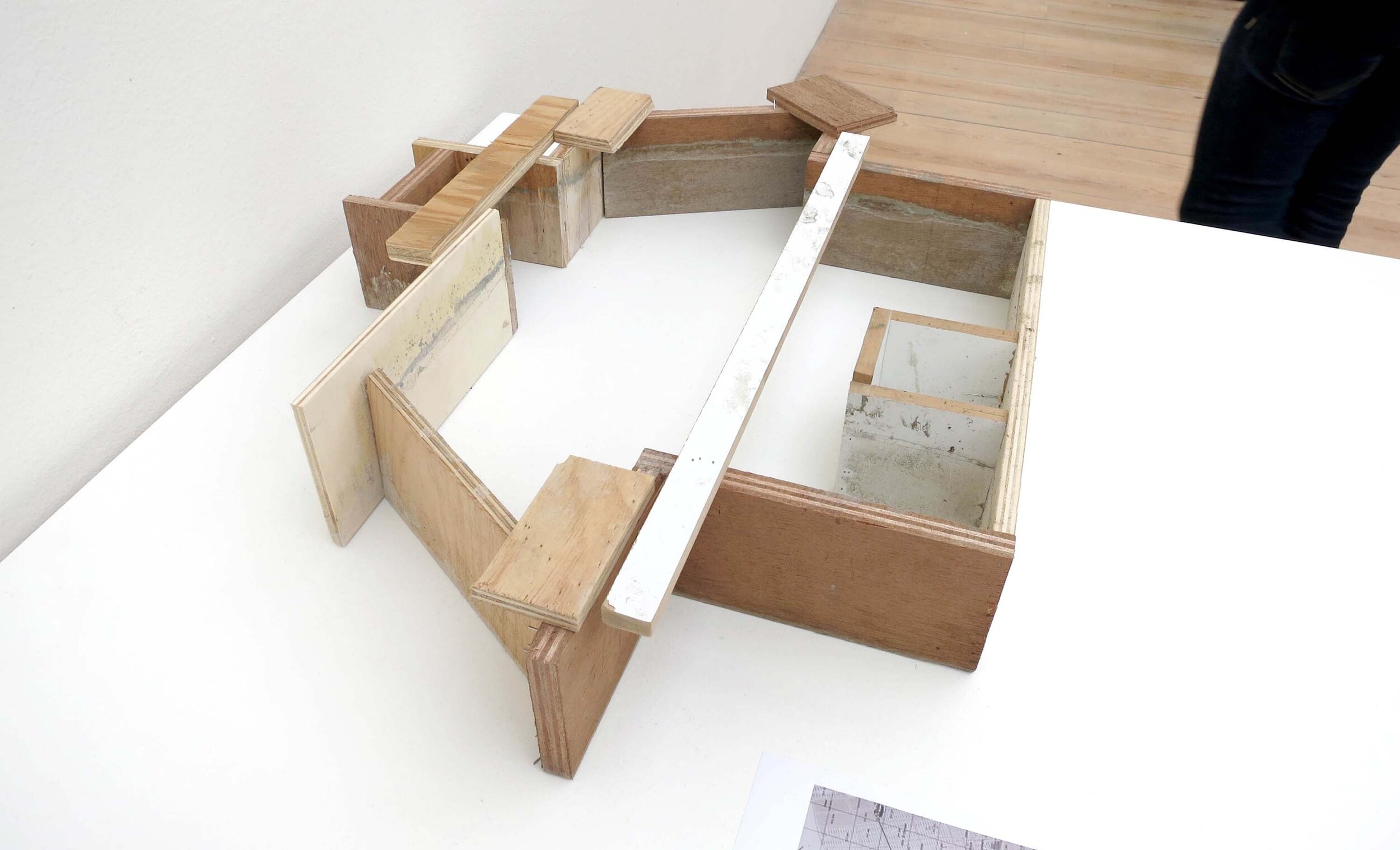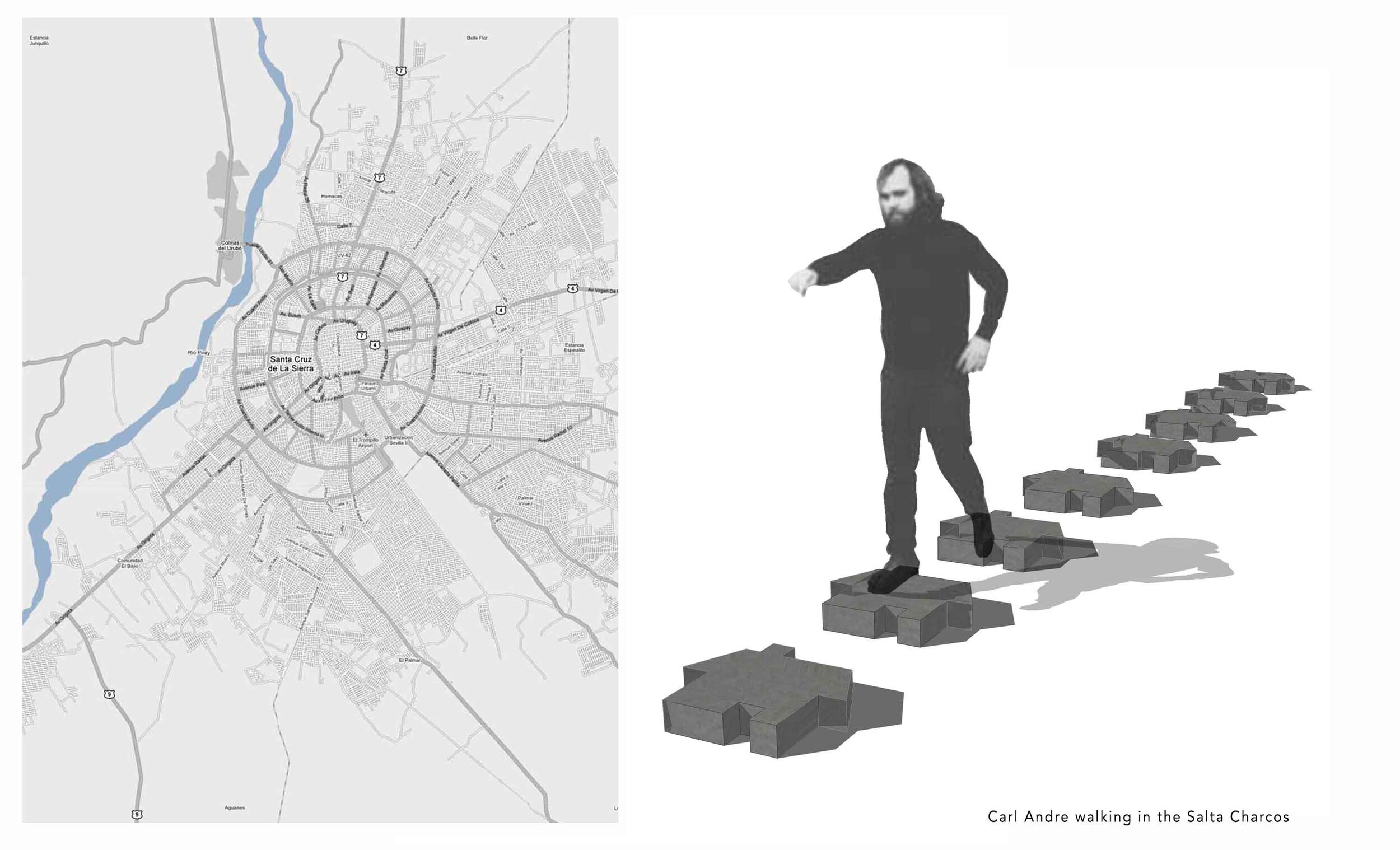Salta Charcos (Puddle Jumpers) Interventions in public spaces, Santa Cruz de la Sierra, Bolivia, reinforced concrete, 50 x 60 x 10 cm, Patricia Phelps de Cisneros Collection (CPPC) 2010
The piece raises the issue of social inequality in modern urban planning and the concept of art that prevails in state institutions. The project takes off from a study of minimalist sculpture and post-minimalism, but drifts away from those references as it comes in contact with other disciplines and functions. The question: “How to get to my house without dirtying my shoes when most of the city lacks suitable road service?...” was what triggered the project. The project went on to name an object that did not have one (the word existed to define the action itself, but not the object that aided it) hence the decision to patent and copyright the name "Salta charcos”, using institutional channels offered by the state and the law to indicate to society the existence of a new object. The piece is in tension with the institution SENAPI-Bolivia. National Intellectual Property Service, as they are unsure on how to categorize it. Should they process it as an application for the registration of an artistic work, or as the legalization of an industrial invention?
“El Salta charcos”
A Project developed during my stay in Santa Cruz de la Sierra-Bolivia (two months), at the KiosKo residence, where the direct contact with the city and its history shaped a proposal for intervening the public space, involving issues ranging from urbanism to formal aspects such as contemporary aesthetics. Santa Cruz, has certain aspects that caught my attention specifically; the condition of the spaces and the urban areas outside the fourth ring, all constitute realities that necessarily altered this new materialization of the idea. The product was a small object called “Salta Charcos”, born from the minimalist and post-minimalist sculptural field but slightly disrupted, it is certainly a work with a fundamental condition to be “stepped on” and has the quality of establishing anthropometric relationships, in other words, metric relationships between the spectator and the work, because of the equidistance that separates them, in order to join two dots on a path, but as the name indicates, it demands hopping to overcome the distance between the puddles that are formed on unpaved roads and during the rainy season it is the ideal object to not get one’s shoes dirty,
Clearly it is not cobblestone because it does not act as such, they do not have a different pattern like mosaic tiles, because all their sides do not necessarily match, only a continuous pattern can be achieved by matching them diagonally, creating diverse interstices when attempting to cover rectangular areas, the progression would only work when attempting to join points on a stretch that are diagonally opposite from each other. They rely on locating them equidistantly from one another leaving the same distance as that of their longest side, this would allow to cover a greater distance in the areas that are to be intervened.
Its evolution.
The act of hopping over puddles must be one of the most ancient acts by man, in the beginning there would be stones to shorten de distance between puddles, brought closer and closer every time, an then creating sidewalks and pedestrian roads, followed by carts pulled by animals, then widening roads and turning them into actual roads, avenues and highways for motor vehicles. What was interesting was the possibility to give a name to an object that represents an action... saltar charcos (hopping over puddles, in Spanish). To give a name to a thing or an object that did not exist before; the action itself already existed, but the object with the name of the action did not, thus the decision to patent it and have a copyright of the “Salta Charcos”, making use of the institutional channels the State and the law offer me to represent the encounter between a new object and the name of an ancient act, but which was not yet represented through a specific work.
What would happen in this third stage, is that being conceptualized from sculptural and aesthetic statements of art, it would slowly become stripped of its condition for generating tensions in the context it unfolds in, and especially due to the categorization by third parties. This began when the project was handed over to SENAPI – Bolivia. (National Service of Intellectual Property). Here, the work is evaluated by the institution and it enters into a disjunction of categories. The first contradiction is generated at the time of filing a request for registration of an artistic work. The central piece for the project of intervening public spaces “salta charcos” does not meet the required characteristics to be considered a work of art*; first, it is not a unique piece for it was conceived for its industrialization, and second, it concerns an object that implies an invention…a very modest one, but an invention nonetheless, and last but not least, the fact that it is a piece of social interest for the community and this characteristic is not inherent to works of art, everything suggests I need to file another request; Registration and legalization of an industrial invention. I had reached the borderline of sculptural and artistic work categorizations as far as the institution was concerned, even though I had explained the people in charge and I had read to them every single page of Rosalind Krauss’s “The Sculpture in the Expanded Field”, I could not enter a discussion on the definition of the concepts established in the regulations that govern the institution itself.
At this point, one of the several control systems determines whether this is a work of art or not. In the end it turned out I could opt for both, but first complying with the industrial invention, that way I could have the right for the artistic work to be displayed at the gallery only as a work or art and the second one pertained to the intervention of public spaces and would be considered as just ‘a thing’; the first would continue to maintain its symbolic pedestal, whereas the second one, for it would have a public and social use it would be reduced to an object on the street to hop over puddles, a piece where two possibilities co-exist, that of being art and not being it.



